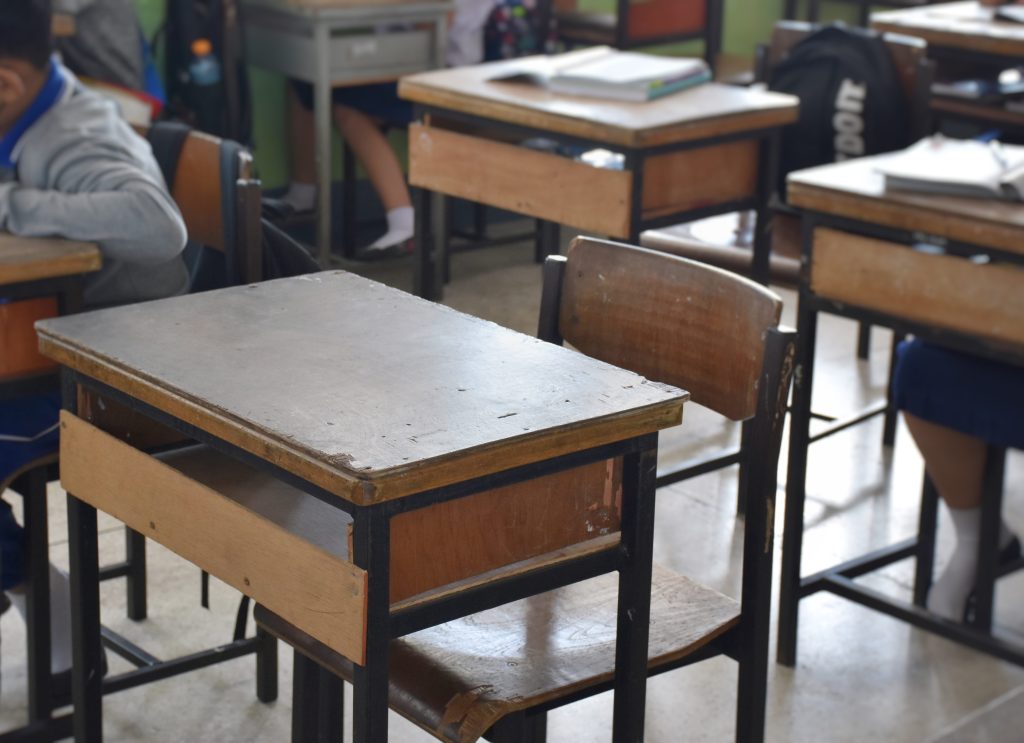As a focus on pandemic recovery fades from public discourse, New York City’s school attendance crisis remains in full effect, according to new data released Wednesday.
About one-third of public school students were considered chronically absent last year, defined as missing at least 10% of school days, the Mayor’s Management Report found.
The data reflect a slight improvement after the absenteeism percentage hovered in the mid-30s during the prior two school years — and more significant progress since chronic absenteeism peaked at 41% in 2021-22.
But it’s a far cry from where observers hoped the city’s education system would have rebounded to by now, several years after pandemic-era school closures. In the decade leading up to COVID-19, roughly one-quarter of students were chronically absent each year.
“It’s so incremental as to be almost meaningless,” David Bloomfield, a professor of education law and policy at Brooklyn College and the CUNY Graduate Center, said of the marginal year-over-year gains.
The city’s stubbornly high absenteeism rate mirrors worrisome trends observed across the nation — and may indicate a permanent rupture in families’ views on the importance of school attendance, barring intervention.
“There seems to have been a cultural shift that attendance is optional,” Bloomfield added. “What else can account for such huge number of families and children not making school attendance routine?”
 About one-third of public school students were considered chronically absent last year, defined as missing at least 10% of school days, the Mayor’s Management Report found. (Shutterstock)
About one-third of public school students were considered chronically absent last year, defined as missing at least 10% of school days, the Mayor’s Management Report found. (Shutterstock)
In the report, officials said that to boost attendance, schools last year continued to conduct “extensive” outreach, worked with community groups, and followed up daily with students and their families. Asked if the Adams administration is still focused on the issue, or if the high no-show rates represent a new normal, City Hall defended its response.
“The proof is in the pudding — chronic absenteeism has dropped to its lowest level in four years,” said Zachary Nosanchuk, a spokesman for Mayor Adams. “This is a historic success, but we won’t stop here.”
In her first year leading the Big Apple’s school system, Chancellor Melissa Aviles-Ramos has tried to tackle the problem as part of a body of work she calls “NYCPS Cares,” which connects families — including those whose kids struggle with attendance — with existing city resources.
“Parents want to send their kids to school. If kids aren’t going to school, there is a barrier keeping them from school,” Aviles-Ramos told the Daily News in April. “Instead of, ‘Why haven’t you sent your kids to school?’ we’re asking, ‘What are the things that are keeping you from sending your kids to school? And how can we help you?’ ”
The Education Department also provides schools with training and guidance on how to reduce chronic absenteeism, such as by tapping staff to call students if they’re absent or holding weekly meetings of “school attendance teams” to monitor trends and intervene early. Officials also promote the use of “Success Mentors,” or adults who guide students and identify the reasons they’re not in class.
Plus, a citywide campaign to promote the benefits of regular attendance will launch soon, a spokeswoman said.
As Adams’ reelection bid continues to poll in the single digits, it will likely fall to a new administration to reaffirm a focus on returning chronic absenteeism to, at least, its prepandemic levels.
Democratic nominee and mayoral front-runner Zohran Mamdani has yet to release a full education plan. However, he has thrown his support behind a pilot program, “Every Child and Family Is Known,” which fosters one-to-one relationships between children in homeless shelters and caring adults. Students in shelters are twice as likely to be chronically absent as their classmates, according to a program description.
Andrew Cuomo, the mayoral candidate polling second, but significantly behind Mamdani and running as an independent, says he would convert schools with high absenteeism to “community schools” that offer support services, among other initiatives.
The Mayor’s Management Report offers an early indicator of how chronic absenteeism rates shifted last year, though more complete attendance data — broken down by race, disability, poverty and homelessness — are expected to be released in the coming months.
Bloomfield, the education professor, stressed the importance of school attendance in not only academic progress, but also child development and eventually workforce readiness.
“[Society] depends on people getting up and going to work and attending to their duties, their obligations,” he said. “Showing up is a big part of adult success, and that’s taught through school attendance — regular school attendance.”
Originally Published: September 17, 2025 at 2:47 PM EDT
